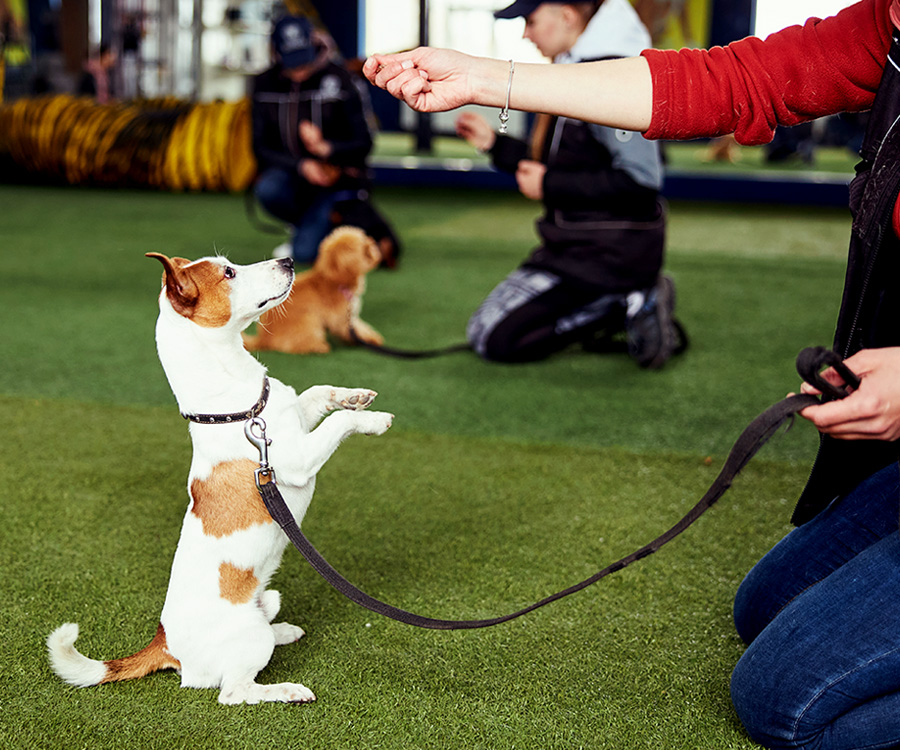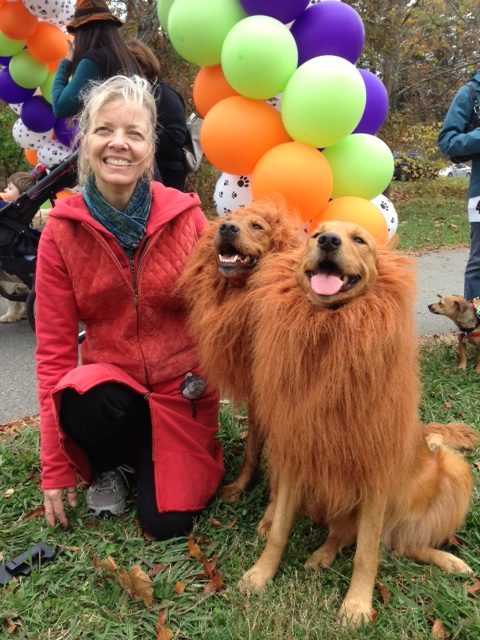Essential Tips for Successful Dog Training: A Guide for Family Pet Owners
Reliable pet dog training is a diverse procedure that needs a tactical approach customized to both the animal's temperament and the proprietor's goals. Understanding just how to navigate these barriers can considerably enhance the training experience, eventually transforming the partnership between proprietor and pet dog.
Understanding Canine Behavior
Recognizing pet dog actions is crucial for efficient training and cultivating a harmonious relationship between pooches and their owners. Pet dogs communicate mostly through body movement, vocalizations, and activities, making it critical for owners to analyze these signals accurately. Acknowledging a dog's position, tail placement, and ear orientation can supply insights into its emotion. As an example, a wagging tail does not always suggest joy; it can also indicate exhilaration or anxiety.

Socializing plays a considerable role in canine actions; direct exposure to numerous settings, individuals, and other animals can substantially affect a canine's temperament. Variables such as type attributes and private temperament need to assist training techniques, as some breeds might have certain behavioral attributes that require tailored strategies. By recognizing these aspects, proprietors can produce a supportive setting that urges positive actions, causing successful training end results and a deeper bond with their pet dogs.
Establishing Regular Commands
Efficient interaction with your pet dog begins with developing consistent commands. This fundamental element of training is crucial for cultivating understanding between you and your family pet. Consistency in the commands you utilize ensures that your pet dog can reliably connect specific words or expressions with the desired habits.
When picking commands, choose clear, distinctive words that are easy to claim and distinguish from each other. Stay clear of using similar-sounding commands that might perplex your pet. As an example, utilizing "rest" and "remain" is suitable, however "rest" and "hit" could bring about misunderstandings.
Additionally, preserve the very same tone and quantity for each command. Canines are sensitive to singing signs, so differing your tone can create confusion.
It is just as crucial to make certain that all household members are on the same web page pertaining to the commands made use of. A united front in command use will certainly avoid blended signals and strengthen the knowing process.
Positive Support Strategies
The power of positive reinforcement in canine training depends on its capacity to motivate desired actions with rewards and appreciation. This strategy is grounded in the concept that habits followed by favorable end results are more probable to be duplicated. By incorporating favorable reinforcement right into your training program, you can effectively form your canine's actions in a useful fashion.
To carry out positive support, it's important to recognize what inspires your dog, whether it be deals with, toys, or spoken praise. When your pet dog executes a preferred action, such as resting on command, immediately compensate them with a treat or love. This association in between the command and the favorable result reinforces their understanding.
It's essential to timing the incentives properly; supplying the reinforcement within seconds of the wanted behavior assists your pet make the connection (dog training). Furthermore, uniformity is vital-- guarantee that all relative make use of the same commands and benefit systems to stay clear of complication

Progressively, you can minimize the frequency of treats as your dog finds out the actions, transitioning to applaud or periodic benefits. This technique not just cultivates a strong bond between you and your canine however additionally advertises a positive discovering setting, making educating a pleasurable experience for both.
Socialization and Interaction
Constantly revealing your pet to a variety of environments, people, and other animals is important for their social advancement. Socialization must start early, preferably during the important home window of 3 to 14 weeks, when young puppies are most responsive to brand-new experiences. Nevertheless, older pet dogs can likewise profit from continuous socialization efforts.
Introduce your canine to different settings, such as parks, pet-friendly shops, and city locations. This direct exposure aids them adjust to different stimulations, minimizing stress and anxiety and worry actions. Motivate positive communications with various other pet dogs and people, guaranteeing that these encounters internet are secure and regulated to foster self-confidence.
Utilize organized playdates with courteous dogs, as this can improve your canine's social abilities and instruct them appropriate habits. Obedience classes and training sessions likewise provide superb chances for socializing, enabling your pet to communicate with others in a monitored atmosphere.
Display your canine's body movement during interactions, as this will certainly assist you determine their comfort degree. Gradually enhance direct exposure to more difficult scenarios while ensuring that each experience is positive. A well-socialized pet dog is more likely to show balanced behavior, making them a pleasure to have in any setting.
Resolving Common Training Difficulties
Every pet proprietor will come across training you could look here obstacles at some point, regardless of their pet dog's age or socializing level. Identifying typical concerns such as stubbornness, distractions, and fearfulness can assist in establishing reliable strategies for improvement.

Slowly introduce interruptions as the canine becomes much more competent in commands. Short, frequent training sessions are also reliable in keeping interest.
Fearfulness can hinder a dog's learning procedure. Steady desensitization to the resource of concern, combined with favorable reinforcement, can help alleviate anxiousness. Perseverance is vital; never ever require a pet right into a circumstance that causes distress, as this might intensify the issue.
Inevitably, understanding and attending to these common obstacles with an organized method will certainly promote a more effective training experience, enhancing this hyperlink the bond between pet dog and owner while advertising effective learning.
Final Thought
In summary, effective dog training depends on an extensive understanding of canine habits, the establishment of consistent commands, and the application of favorable reinforcement methods. Socialization plays a vital function in creating well-adjusted animals, while resolving typical training obstacles calls for perseverance and versatility. By executing these necessary methods, pet dog owners can foster a solid bond with their dogs and advertise preferable behaviors, eventually bring about a harmonious connection in between humans and their canine buddies.
Recognizing dog habits is crucial for effective training and promoting an unified partnership between canines and their owners.Socializing plays a significant role in canine habits; direct exposure to numerous environments, people, and other pets can dramatically impact a canine's character.The power of favorable support in pet training exists in its ability to encourage preferred actions via rewards and praise. By incorporating positive reinforcement into your training regimen, you can efficiently shape your pet dog's habits in a constructive manner.
In summary, successful dog training counts on a comprehensive understanding of canine behavior, the establishment of regular commands, and the application of favorable support strategies.
Comments on “Necessary Techniques for Efficient Dog Training You Need to Know”